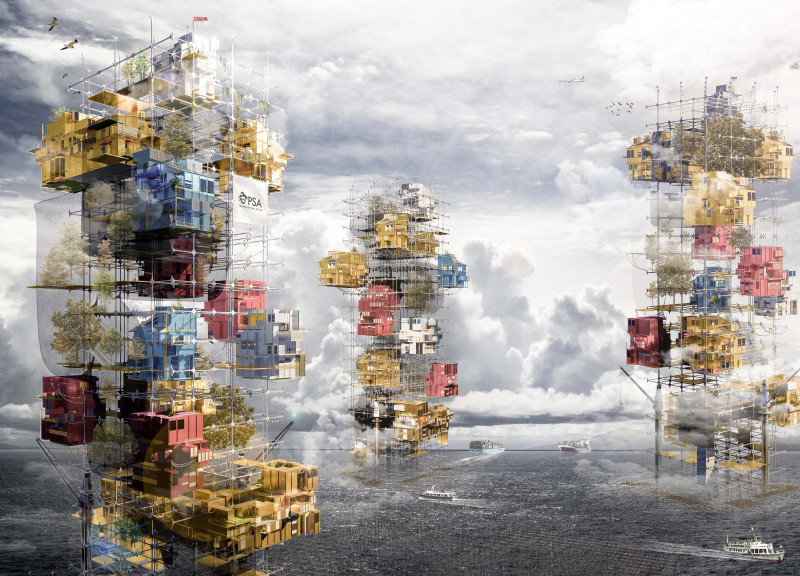5 key facts about this project
The City of The Sea project responds to Singapore's urgent need for land while enhancing its role as a significant global shipping hub. It aims to consolidate existing port facilities into one large site at Tuas, optimizing land use and revisiting the way urban areas connect with the sea. The concept focuses on vertical structures, featuring towers that rise along the island's coastline, creating spaces for both living and working.
Integration of Shipping Containers
Retired shipping containers play a central role in the design. These containers are set to be cleaned and repainted before their use, making them functional building components that bring sustainability into the project. This approach not only utilizes available resources but also introduces a model for adaptive reuse in urban settings, showing how past materials can find new life.
Mixed-Use Development
The towers are designed to accommodate a varied mix of uses—residential, recreational, and commercial. This blend aims to cultivate a lively community atmosphere, reflecting Singapore’s identity as an active port city. Arranging these functions together encourages interaction among people and enriches daily life, allowing for a blend of activities in a single location.
Ecological Considerations
Environmental sustainability is a key aspect of the design. By incorporating sunken containers, the project creates spaces that support local marine life, addressing concerns related to urbanization and its effects on nature. These areas serve as habitats for aquatic organisms while also acting as a natural barrier against flooding, illustrating a commitment to preserving biodiversity alongside development.
Structural Design and Resilience
The structure's elevated design rests on a strong steel framework. This framework not only aids in effective drainage but also provides resilience against flooding, which is vital for coastal areas like Singapore. Together, these structural elements create an environment that bridges human activities and the marine landscape, reflecting a thoughtful response to both urban needs and environmental realities.
At the lower levels of the towers, gentle slopes and accessible terraces invite nature to thrive close to urban life. This design detail encourages a connection between the built environment and the natural world, offering spaces where both can coexist.



























